Instead of joining the tourist crowds on large beaches, are you looking for small bays to swim’n’sunbathe? Do you prefer to enjoy local cuisine and homemade wine in a small tavern over wild party nights? Would you like to be enchanted by picturesque mountain ridges and dense, fairytale-like forests?
Then, I have the perfect place for you: A bit over 20 kilometers north of the capital Santa Cruz, Tenerife keeps one of its greatest treasures, namely the mountain village of Taganana – a place over the hills and far away.
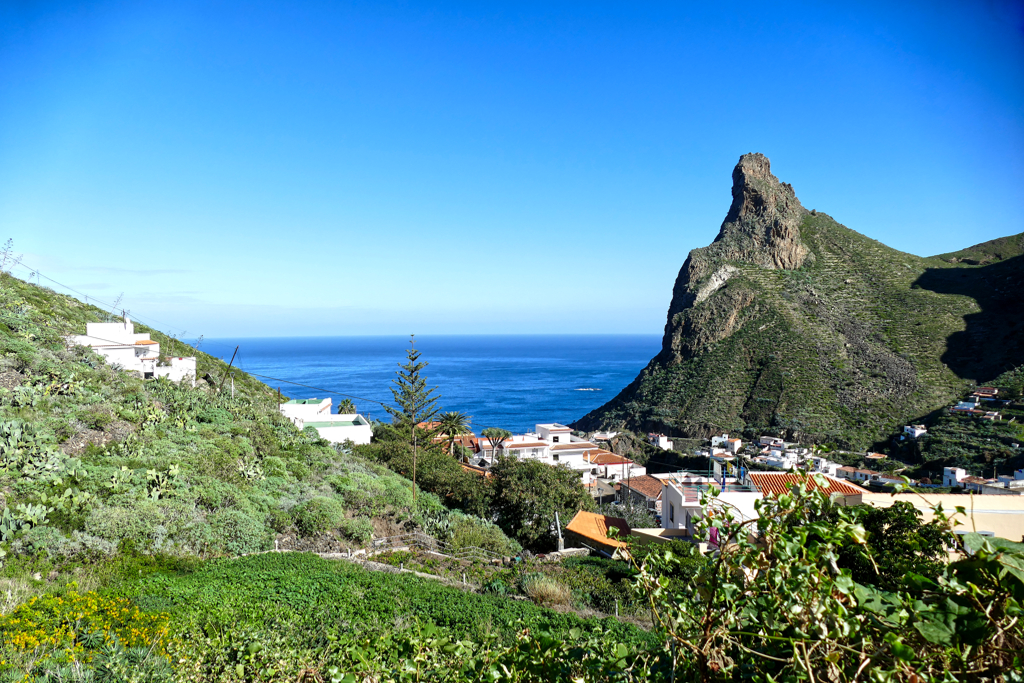
Behind the Wheel
We leave the freeway TF11 northeast of Tenerife’s capital Santa Cruz. We turn off at San Andrés, where the road becomes narrower, just wide enough for two vehicles to carefully maneuver past each other. For the next half hour, I feel like I’m on a rollercoaster. The road winds up the mountain in countless hairpin bends, further and further towards the Anaga Nature Reserve. It’s good to go on this hair-raising drive where an unpleasant surprise can be waiting behind every bend with Claudia. She is from here and has spent her life driving cars over serpentines that seem virtually impassable to us flatlanders. It’s irritating how relaxed she seems to be as she drives the car higher and higher up the mountain in elegant bows. She drives calmly. Calmly yet focused and cautious. Man, she’s a pro.
My little girl
Drive anywhere
Do what you want
I don’t care.
Suddenly, I can’t get the old Depeche Mode song Behind the Wheel out of my head. Obviously, I ignore the ambiguity of its lyrics and take the words literally:
Drive anywhere
Do what you want
I do not care.
My faith is totally in Claudia’s wheel-clenching hands.
The Great Reward
After a good half hour, we reach the highest point on the route. A breathtaking view opens up before us. It’s the wild mountainous landscape of northern Tenerife, spreading all the way to the Atlantic, where on the horizon, the blue of the water transitions seamlessly into the pale color of the sky. One last look, then it goes downwards in equally sharp curves to where the first houses in Taganana are. Man, the saying that the way is the goal must have been invented on the route to Taganana.
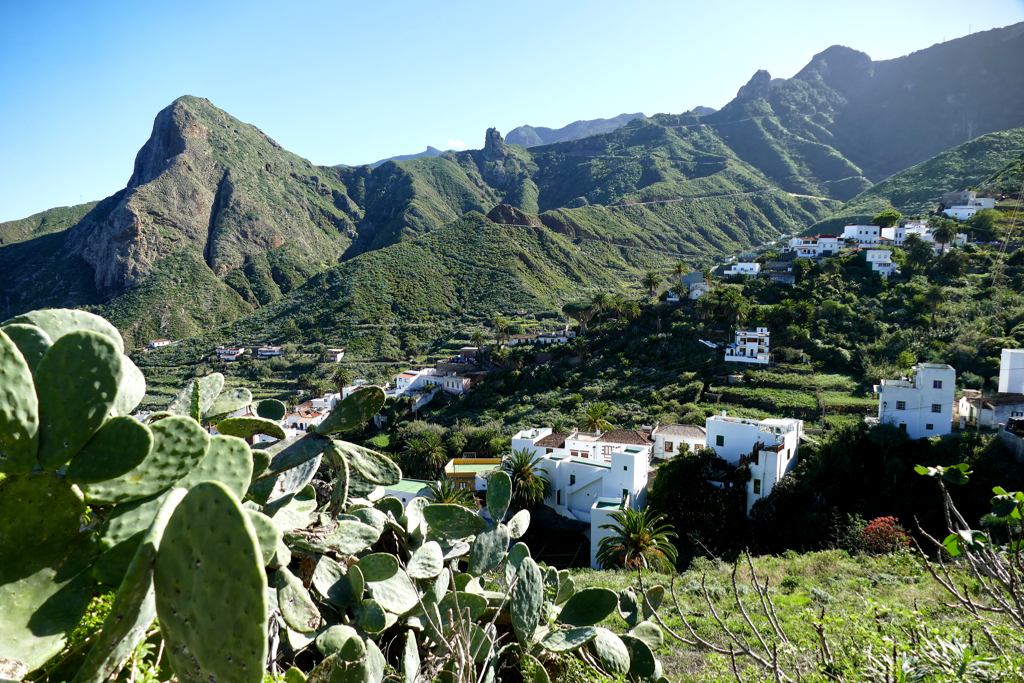
Picturesque little Taganana. A village like a settlement out of a fairy tale. Small whitewashed stone houses cling to the densely vegetated slopes. There is a church, a hermitage, a handful of small bars, and a tiny corner shop that is not called supermercado, but rather boastfully and very internationally is called supermarket. Sounds more worldly.
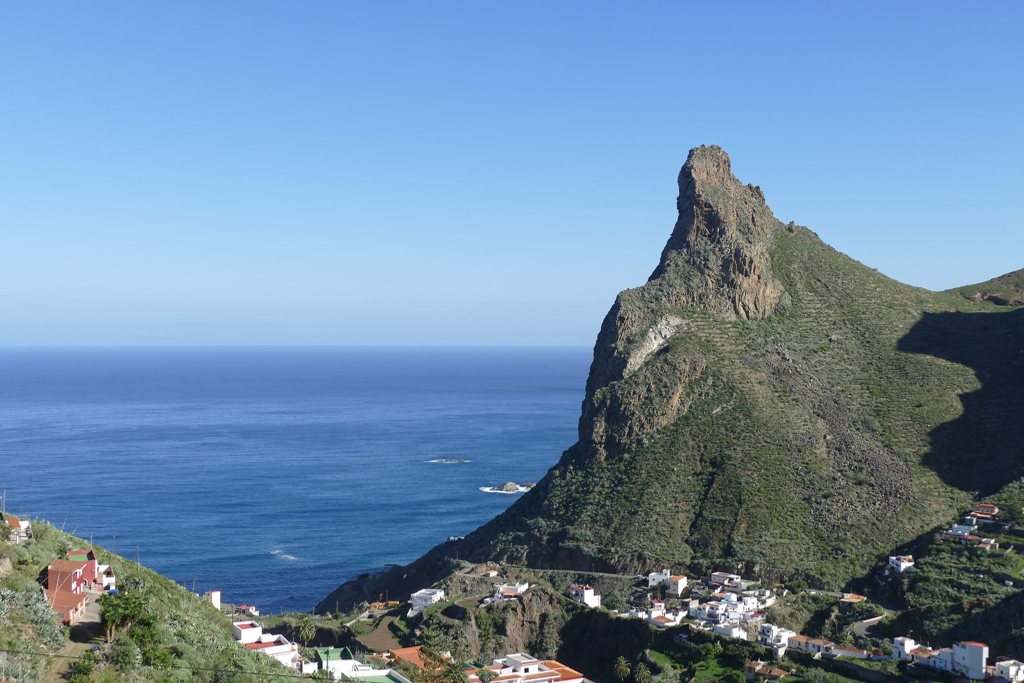
Our small apartment is located right in the alley behind this supermarket, but even here, you have to climb a small slope. During our days in Taganana, we will be constantly walking up and down more or less steep streets and alleys. There is hardly any even part in the village.
The villagers must be incredibly fit.
Taganana
The hamlet of Taganana is the main settlement in the Anaga Rural Park and lies in the southern part of this significant nature reserve. Here, you don’t just enjoy the wild, breathtaking landscape. You will also get a first-hand impression of traditional life, untouched by mass tourism, in one of the oldest villages in Tenerife. In fact, the Spanish conquerors founded the island’s first settlements right here.
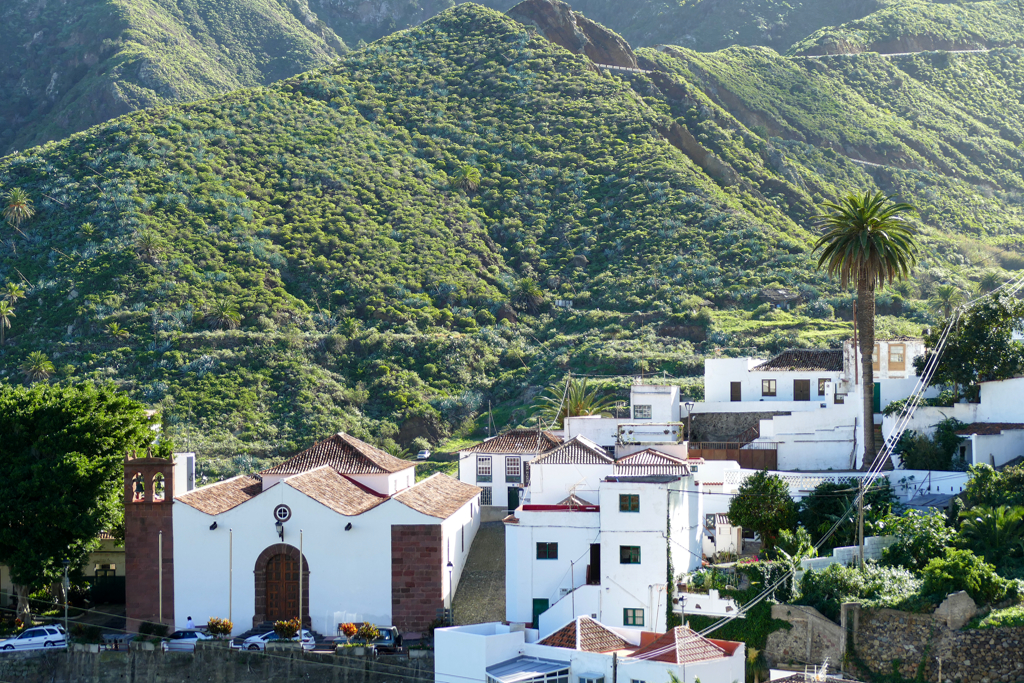
In fact, there are a couple of landmarks of some historical value. Taganana’s church of Nuestra Señora de las Nieves and the chapel of Santa Catalina are listed buildings, after all. In between, a small square forms the center of the village. In the shade of the Indian laurel trees, villagers sit together and chat, and let time and the few foreign visitors just pass by.
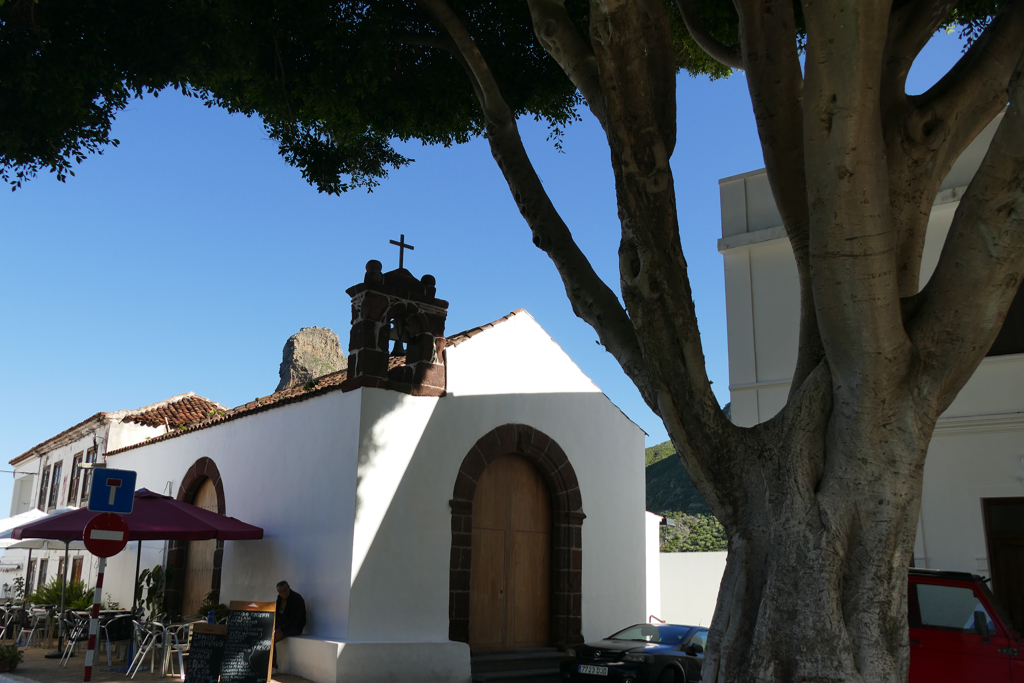
The gorge that separates the two parts of the village is lush with a wide variety of bushes, flowers, fruit, and palm trees, and, of course, the iconic dragon trees. Apart from the Canary Islands, this beautiful giant can only be found in Cape Verde, Madeira, and Morocco.
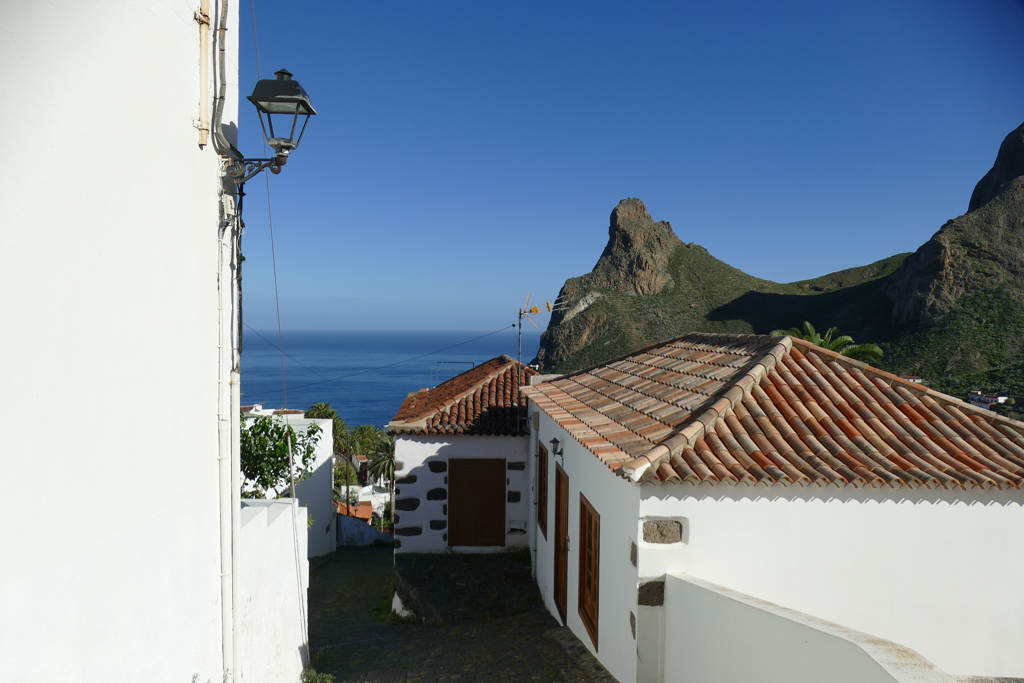
Everything is lush and green and dotted with cute little whitewashed houses. In fact, there is no mind-blowing attraction in Taganana, they don’t have a triumphal arch or a colosseum. But these buildings would pale in comparison to the natural beauty of Taganana, anyway.
Taking a Hike
As I complained said, every walk within the hamlet, no matter how short, is a miniature clamber. I don’t think any alley is flat on more than three meters. This means that every errand, no matter how small, becomes some kind of preparation for the real mountain hikes that can be undertaken in the Taganana’s surroundings.
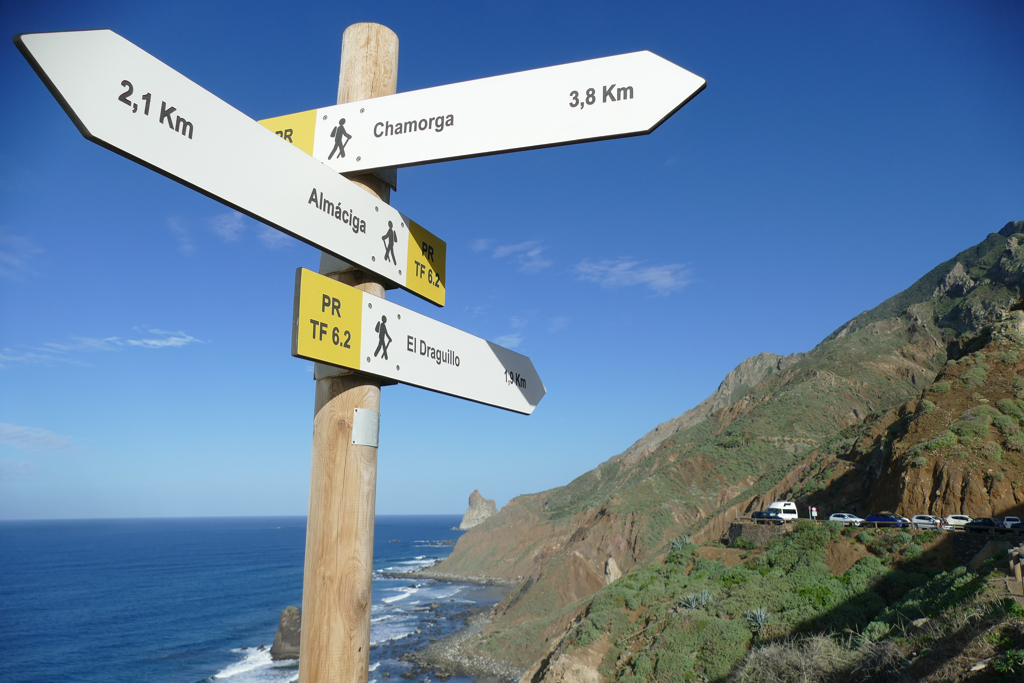
You are spoiled for choice: There are scenic walks along the coastline and trekking routes over the hills and mountains. You can climb up to the village of El Bailadero, from where the view over this part of the island is even more breathtaking. Or you drive to the enchanted fairytale forest of Anaga, which I already introduced in my post about San Cristobal de la Laguna.
And if one day, you happen to be exhausted or just lazy so that you don’t want to chase the mountain goats, simply hike downhill to the north coast and spend a relaxing day by the sea.
Beachfront Location
But I must warn you: Since Taganana is located on the northern edge of the Anaga Mountains, you’ll have to descend a gradient of up to 16% from the village to the seashore!
Three shores east of Taganana are particularly suited for a beach day.
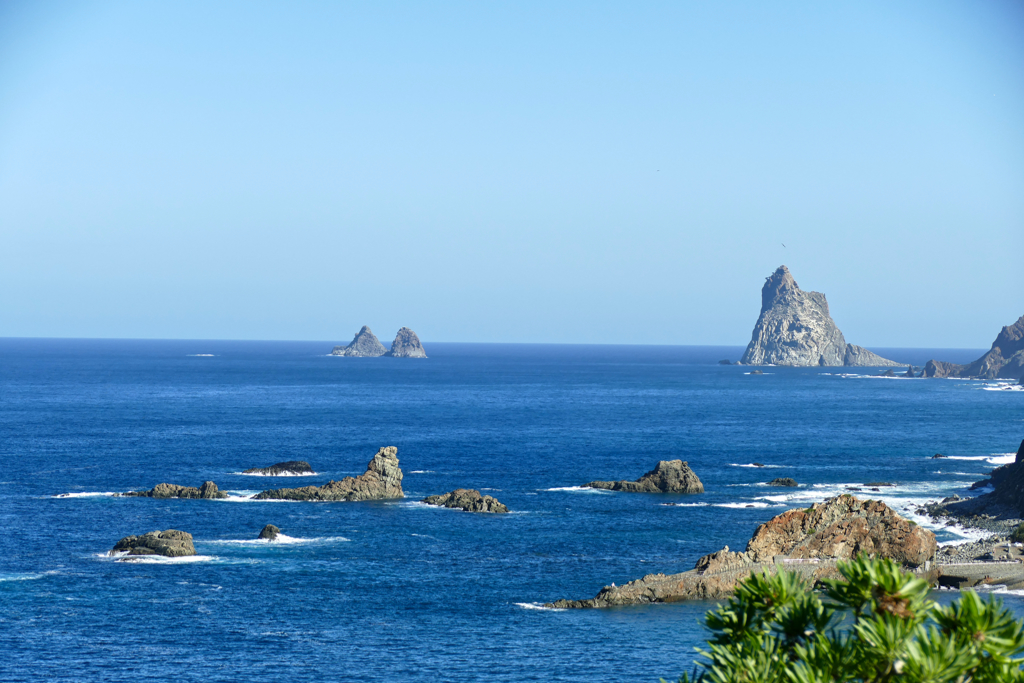
In just around twenty minutes, you can get to Playa del Roque de las Bodegas. This broad beach consists of black sand. As it lies below road level, parts are even in shade. It is the most popular beach in this area and is best suited for families with children because the waves roll onto the shore a little more gently than on the neighboring beaches. But when swimming, caution is still required as unexpected currents can occur.
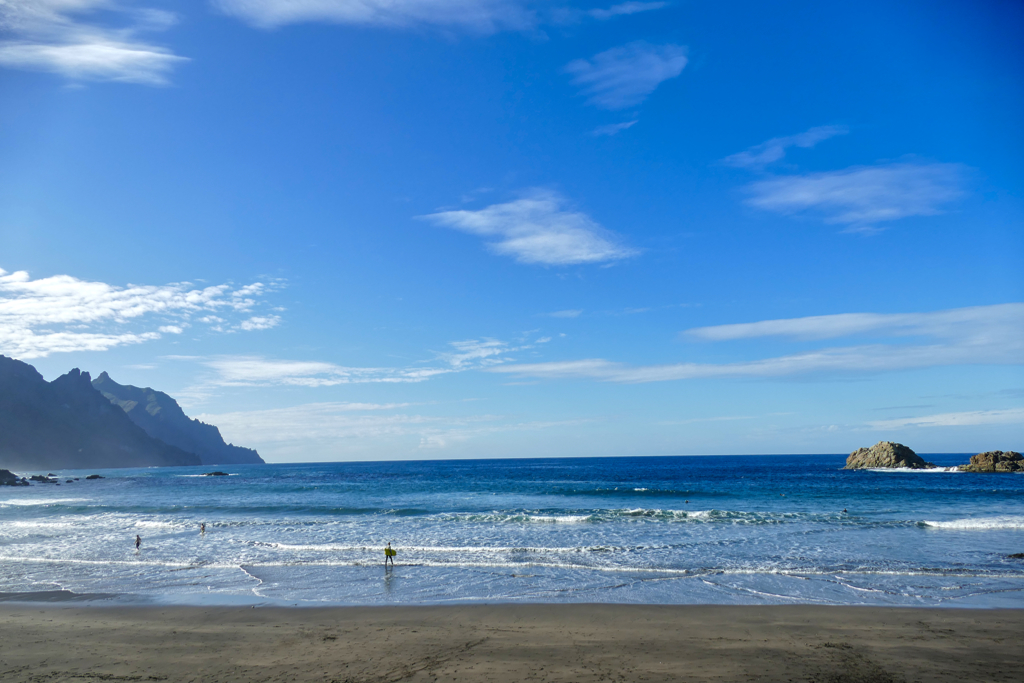
You can walk to the very tip of a bizarre rock formation that extends in a wide arc far into the sea. From here, you have the best view over the water and the beach with the picturesque mountainous landscape in the backdrop. The rock has a walking path and a railing, nevertheless, you ought to be careful.
The Simple Life
There are no services such as loungers, parasols, or showers at Playa Roque de las Bodegas. So make sure to bring a beach towel and, if necessary, a parasol, as black sand heats up much more quickly than the white one.
Although you won’t find any luxurious restaurants with fancy decor, there are some nice rustic places across the street that serve simple Canarian cuisine at fair prices, including lots of fish dishes and freshly caught seafood, prepared the traditional way.
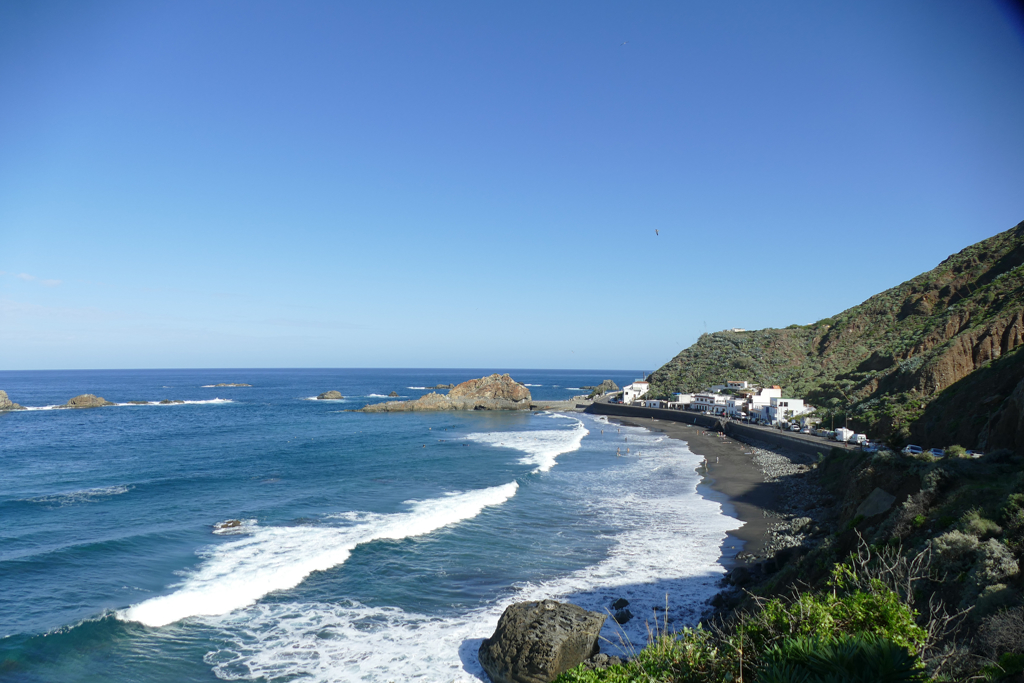
Not too far away is Playa de Almáciga, and even further east is Playa de Benijo, which is also very popular with surfers. While the first two beaches of Taganana are easy to reach on foot, you will want to take the bus to Benijo if you don’t have a rental car. Obviously, the buses in this area don’t run as often as in an international metropolis. The bus #946, which connects the capital with Almáciga via Taganana, only runs eight times a day, the last one leaves Santa Cruz at 7.35 p.m. and returns there from Almáciga at 8.35 p.m.
After that, the world goes to sleep.
My Tip
Especially during high season, you certainly won’t be the only one taking public buses. And while the bus network in Tenerife is comprehensive and flawless, the frequency definitely should be increased. At times, the buses are so packed that passengers are squeezed in like sardines and then have to travel standing up for quite long stretches. Therefore, get to the stop early – ideally around 20 minutes before scheduled departure – and don’t linger, but get in line so that it is clear which place you have in the queue.
Rough Pleasures
Another beautiful swimming spot below Taganana is Playa de Tachero. I don’t know who came up with the idea of calling this a beach, but so be it. A visit is still definitely worth it, even if the bathing area is made of pebbles and rocks.
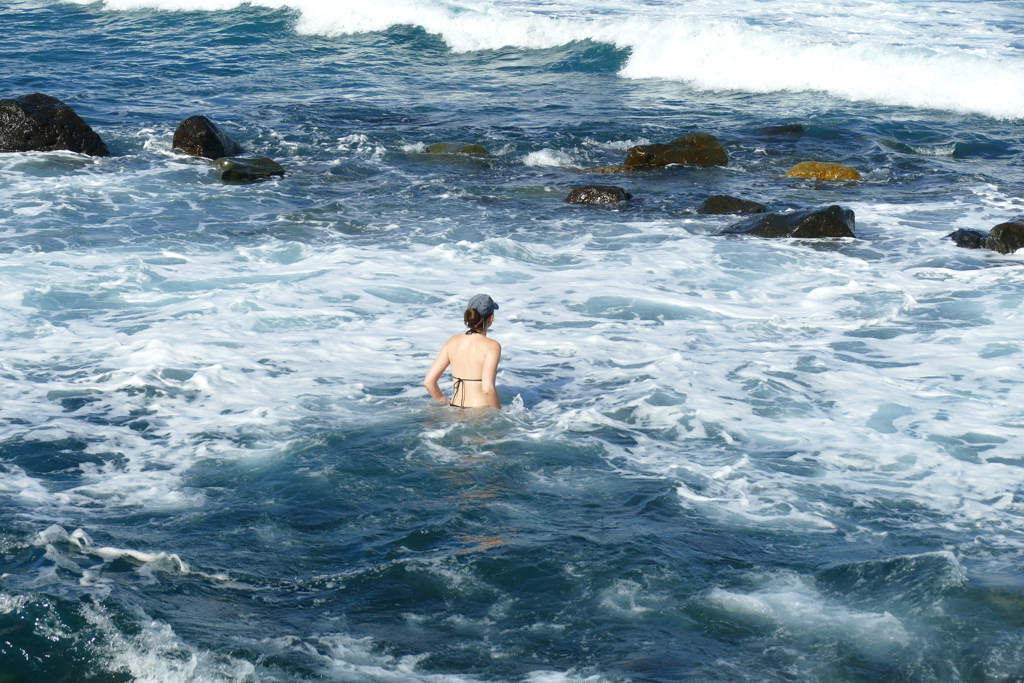
Offshore, nature formed a large basin out of the cooled lava, into which the sea now washes seawater in waves. A swim in this so-called Charcon is a unique experience, but very dangerous if the sea is too rough.
Nevertheless, be particularly careful at all times and be sure to wear good bathing shoes. This means you can walk on the prickly pebbles and avoid slipping on the sea-washed stones. If the waves are too strong, it is better to avoid swimming, even in the more sheltered area of the pool.
Where the Way Is the Goal
The path from Taganana to Tachero is many times more picturesque than in the direction of Almáciga. You walk in wide curves down a dirt road that leads between fields and banana fields, the beautiful mountains around you, the cool waters of the Atlantic already beckoning below you.
I can also reassure you: The way down makes the hike back up seem more strenuous than it later actually is.
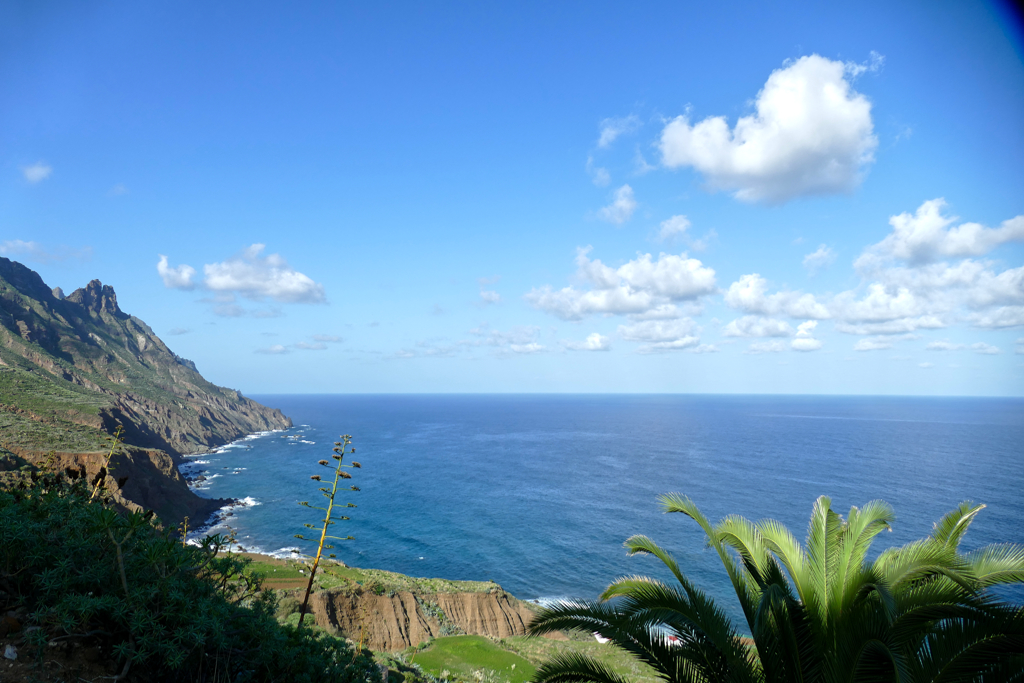
Once you make it down to Tachero, take a little stroll through the village, which only consists of a handful of houses and a cute little church, the Ermita de San Juan.
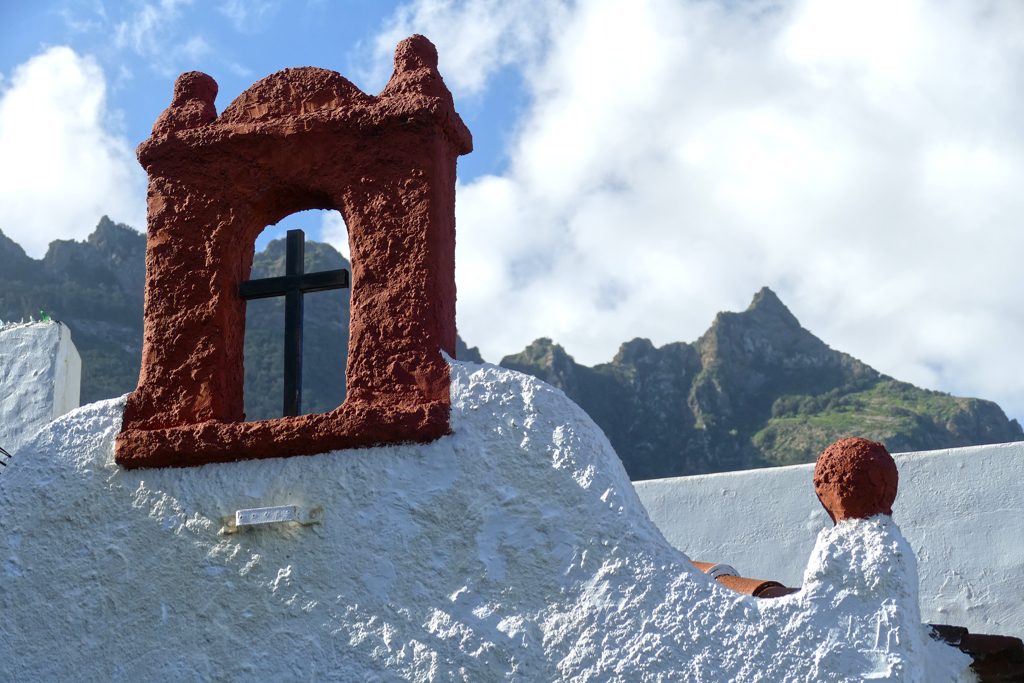
When visiting Playa de Tachero, it should also be remembered that there are no facilities whatsoever. While you can at least buy something to drink and a snack around the other beaches, here you should have everything you need with you. Hence, remember to pack sun protection, a hat, bathing shoes, drinking water, a snack if you need it, and a change of clothes if necessary before you set off on your hike to this secluded gem.
Anaga Natural Reserve
One of Taganana’s most charming features is the surrounding Anaga Natural Reserve. It spreads over an area of more than an amazing 14,000 hectares over the mountain range.
The best way to enjoy the Anaga Natural Reserve is to walk along the many hiking trails, obviously. In many spots, the trees are forming some kind of tunnels with moss covering their trunks and hanging from their branches under a sea of clouds. All this gives you the sensation of walking through an enchanted forest.
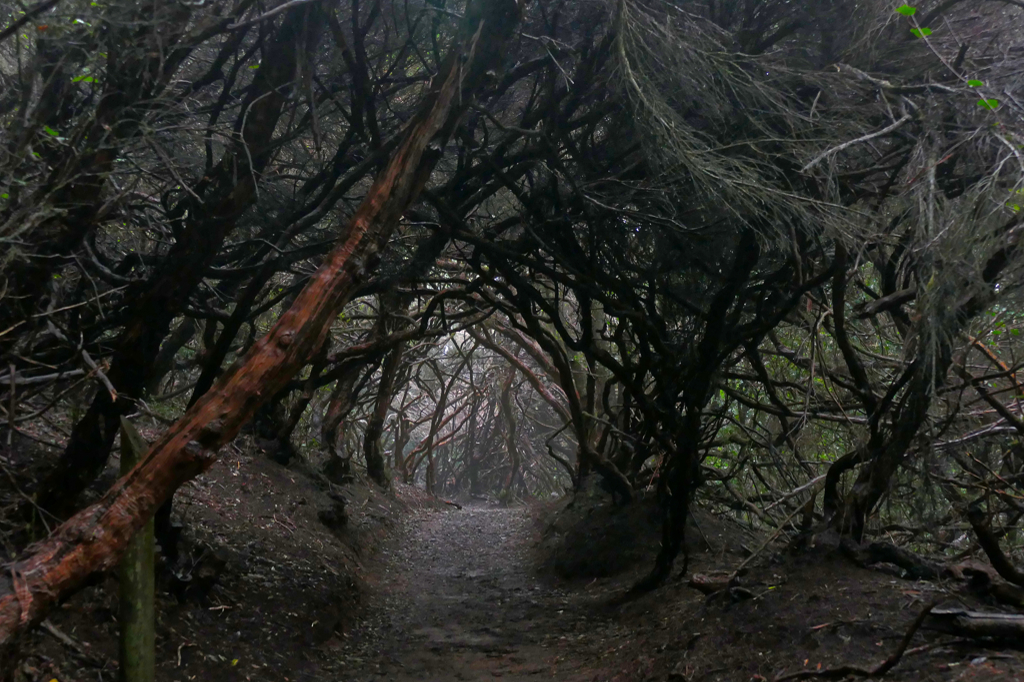
In the highest areas, you will find the most beautiful laurel trees in all of Tenerife. It is actually a relic from 40 million years ago. As a matter of fact, this type of forest covered the Mediterranean until the last Ice Age. Hence, walking between these twisted moss-covered trunks is a journey way back in time.
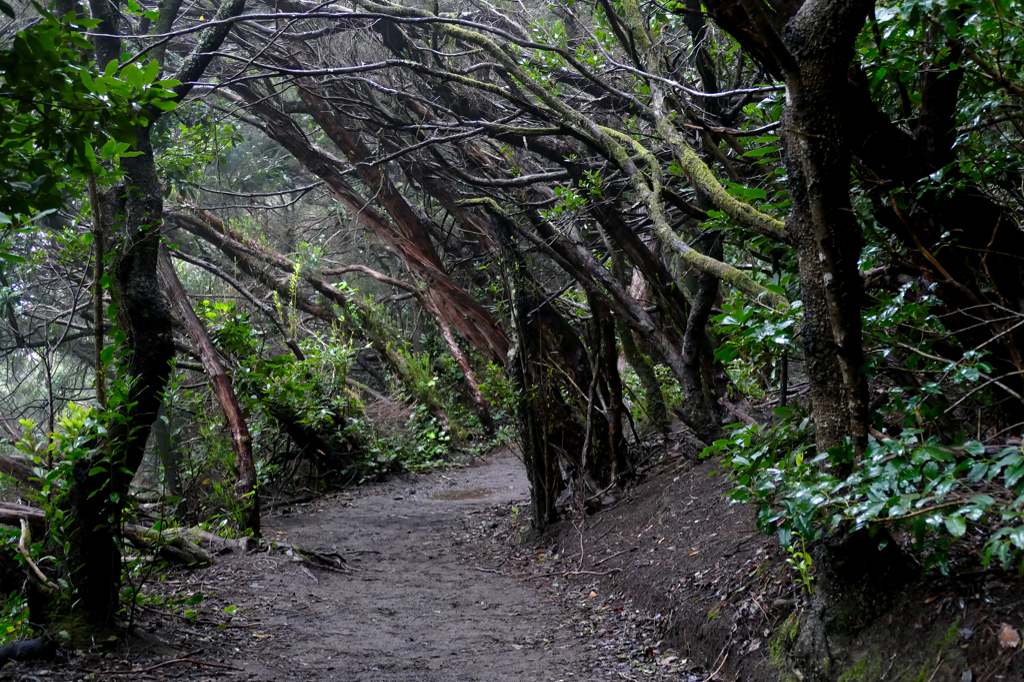
Not only are the mountains one of the oldest geological formations in Tenerife. Due to distinct altitudes, microclimates, and soils, they facilitate the growth of exceptional biological diversity in a relatively small area. Therefore, you’ll find almost all of the island’s ecosystems here in one spot.
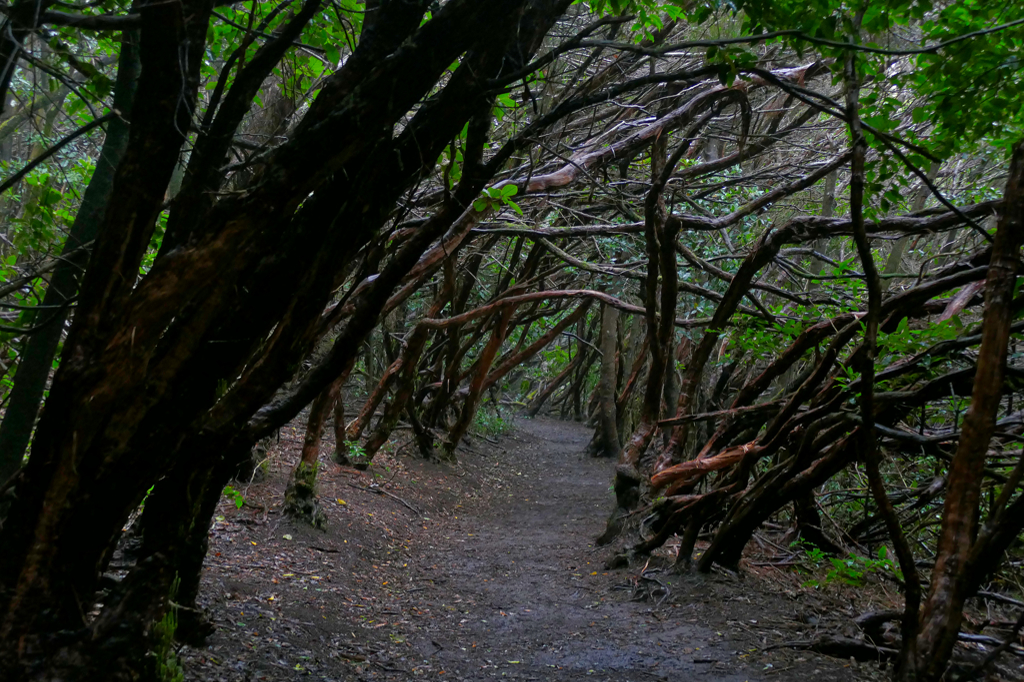
But not just the flora is amazing, the fauna is rich and diverse, too. You will find about a hundred unique animal species. Obviously, I’m not talking about lions and giraffes but rather about invertebrates and birds. The Anaga Natural Reserve is actually a special bird protection area. But as the reserve does not consist only of mountains but includes the shores below, there is also a rich aquatic life.
Plan Your Visit
The best way to plan at least your very first visit is by inquiring at the Cruz del Carmen Visitor Center. Just tell the rangers at the visitors’ center what you’d like to do. There are circular trails from 5 to 20 kilometers, which equals around 1.5 to 8 hours. Also, be aware that not all hikes are of the same difficulty level.
The best way is to just tell the guys how long you want to walk and how difficult the trail can be. Then, they show you one of the routes that might suit you best on a screen. Also, they give you a leaflet and off you go into the fairytale forest.
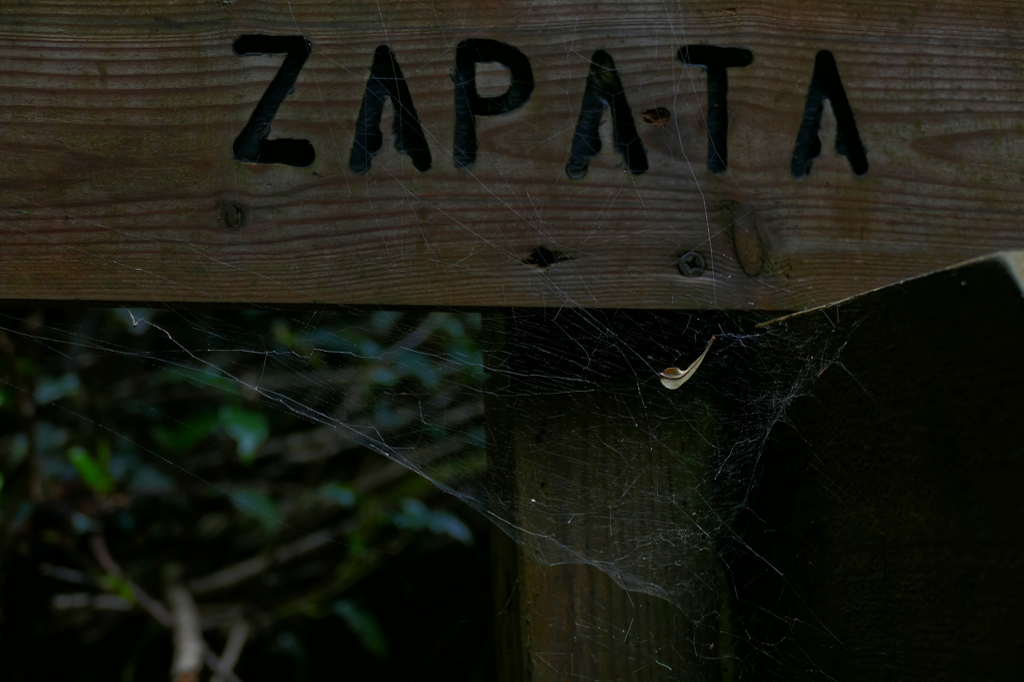
By the way, I chose #3 called El Bosque de Los Enigmas, hence, the forest of mysteries. You walk an easy route of 5 kilometers and can learn a lot about the mysteries of nature around you.
The visitors’ center is open every day from 9.30 a.m. to 4 p.m.
Just a few steps away from the visitors’ center is a bus stop, and there is a spacious parking lot, too. Although Taganana is located amidst the park, it is not that quick to get to the Cruz del Carmen. You either have to hike uphill to El Bailadero from where you can take bus #77 to the visitors’ center. Or you take bus #946 to the Intercambiador in Santa Cruz, from where you continue by bus #20 to the Intercambiador in San Cristobal de la Laguna. From there, bus #273 takes you to Cruz del Carmen. The latter is far longer, yet less strenuous.
What to Bring
Everything depends on the activities you have planned. What’s definitely indispensable is a pair of good hiking shoes. You might hike some of the easier trails in sneakers. But after I broke my leg in a gorge in Gran Canaria, I’m an ardent advocate of sturdy footwear with a firm grip.
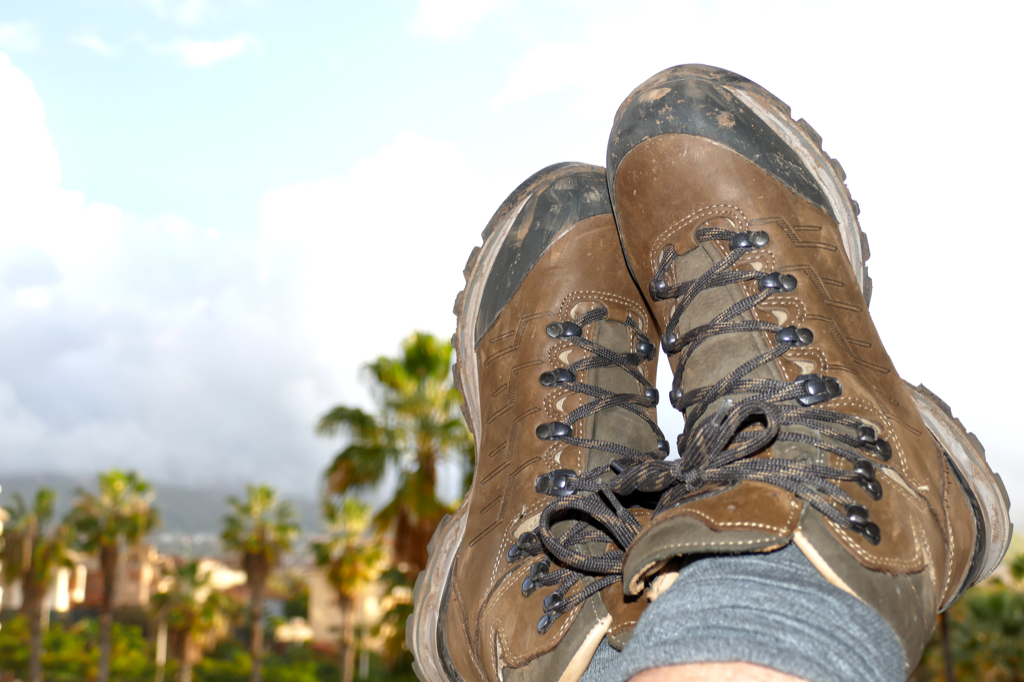
Also, you should always have your cell phone with you and check the connection from time to time.
If you are hiking in summer, you should have sunscreen with you and wear a hat. However, up here, the weather can change unexpectedly quickly. Therefore, bring at least a rain skin, better a foldable rain jacket, as it can also get a bit nippy.
Even on the shorter hikes, you should always have some drinking water on you and possibly some fast snacks like protein bars or sundries.
If you choose a hike that passes or ends at one of the stunning coves, you should definitely bring your bathing suit. After a hike, nothing beats a refreshing dip in the ocean.
Practical Information
How to Get There And Around
As I pointed out above, the connection between Taganana and the world is not so frequent. Bus #946 goes between Tenerife’s capital, Santa Cruz, and Almáciga eight times a day, on weekends only six times.
Nevertheless, it is absolutely possible to visit places around the entire island by public transport, you just need to be an early riser and halfway organized.
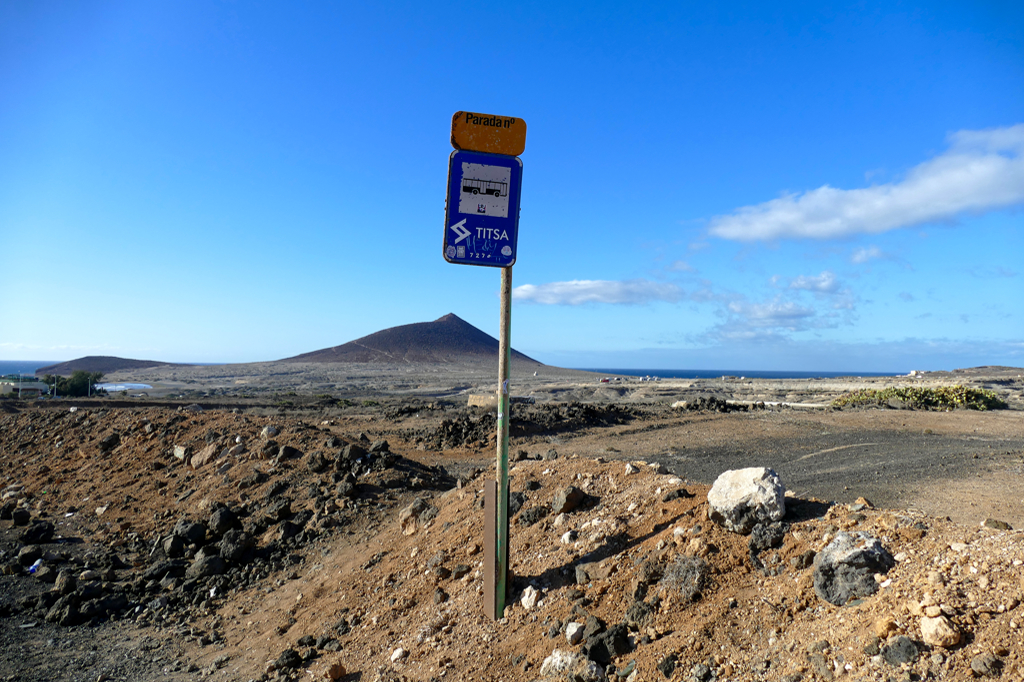
To take the bus, you can always obtain a ticket from the driver. Prices depend on the distance, obviously, and you can pay cash or by a bank card that’s equipped with NFC. TITSA, the local bus company, has a great website where you’ll find all the connections and prices, and everything you need for an easy trip. There is even a section that’s especially catering to tourists. However, in my general post on Tenerife, I’m supplying you with some good tips on how to travel by public bus, even cheaply and more smoothly.
This being said, as much as I recommend staying in Taganana if you want to hike and bathe on secluded beaches and, other than that, get away from it all, I cannot recommend it as your base if you want to explore as much as possible of the island. If this is your plan, you’re best option would be Puerto da la Cruz, San Cristobal de la Laguna, or Santa Cruz.
Organized Trips
Although it’s possible to organize your visits by public transport, it can be time-consuming and a bit stressful. Therefore, joining an organized tour that takes you comfortably and, most importantly, safely to the places you want to see might be the better option, especially if you only have a limited amount of time to spend on the island.
Here are some suggestions for which tours to join in Tenerife*:
Where to Stay
When we planned our stay in Taganana, I was worried that there might be no accommodation there. And although the choice is not overwhelming and of course – and fortunately – there are none of those big hotels, I was able to choose from a few holiday apartments that are rented out by locals.
We chose Casa del Cubano* primarily for the location and were very satisfied. It is a fully furnished holiday apartment that can easily accommodate up to three people. You will find everything you need for a comfortable stay.
The house is located directly behind a small grocery store that ostentatiously calls itself a supermarket. We were only there for four days. For a longer stay, it might be worth bringing your basic groceries from a real supermarket in Santa Cruz – not only because of the cheaper prices, but above all because of the much larger selection.
If the Casa del Cubano* is booked, you will find a selection of other accommodations on this map*:
Where to Eat
Taganana is a Canarian village over the hills and far away, hence, don’t expect any kind of Haute Cuisine or exotic international cooking. There is a handful of bars serving classic Canarian food. And although it’s not refined and rather rustic, you can be sure that the cook prepared every meal from scratch by using the freshest ingredients from the orchards and fields in the vicinity as well as the bordering Atlantic Ocean.
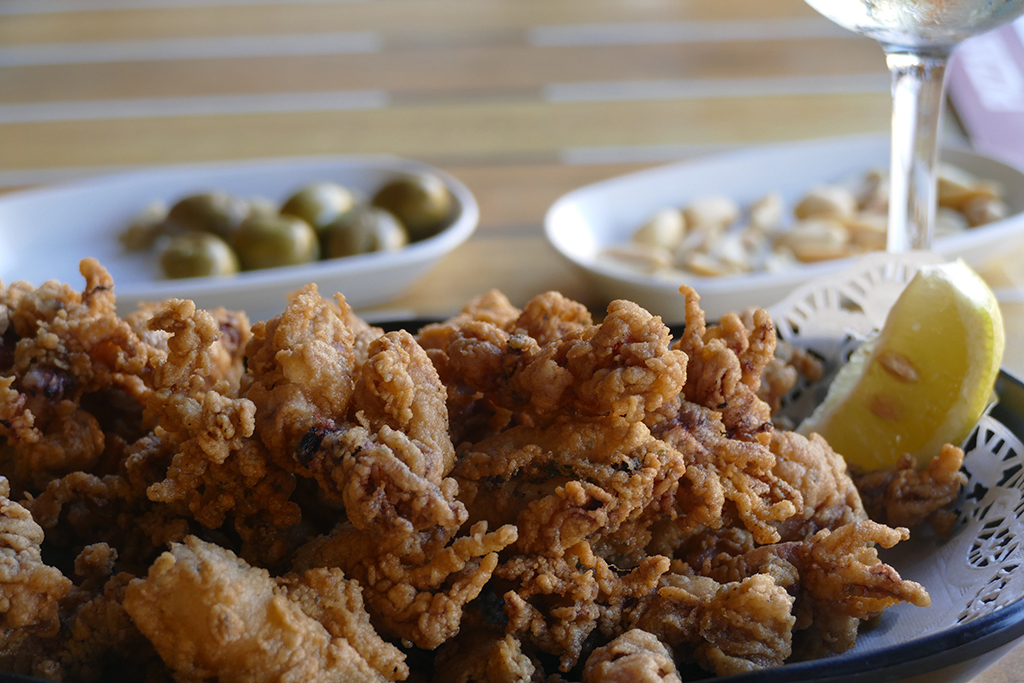
I marked three of Taganana’s most popular eateries on the map below.
Map
On this map, I’m showing you where to find the wonderful hidden spots around Taganana. Clicking on the slider symbol at the top left or the full-screen icon at the top right will display the whole map, including the legend.
Taganana and the National Park Anaga are just two of many absolutely amazing places I was lucky to see during my visit to Tenerife. To read about the others, go to this post and take your pick!
For general information on Spain, go to this post since there, you’ll find information and tips that will make your trip much smoother and more enjoyable.
Pinnable Pictures
If you choose to pin this post for later, please use one of these pictures:
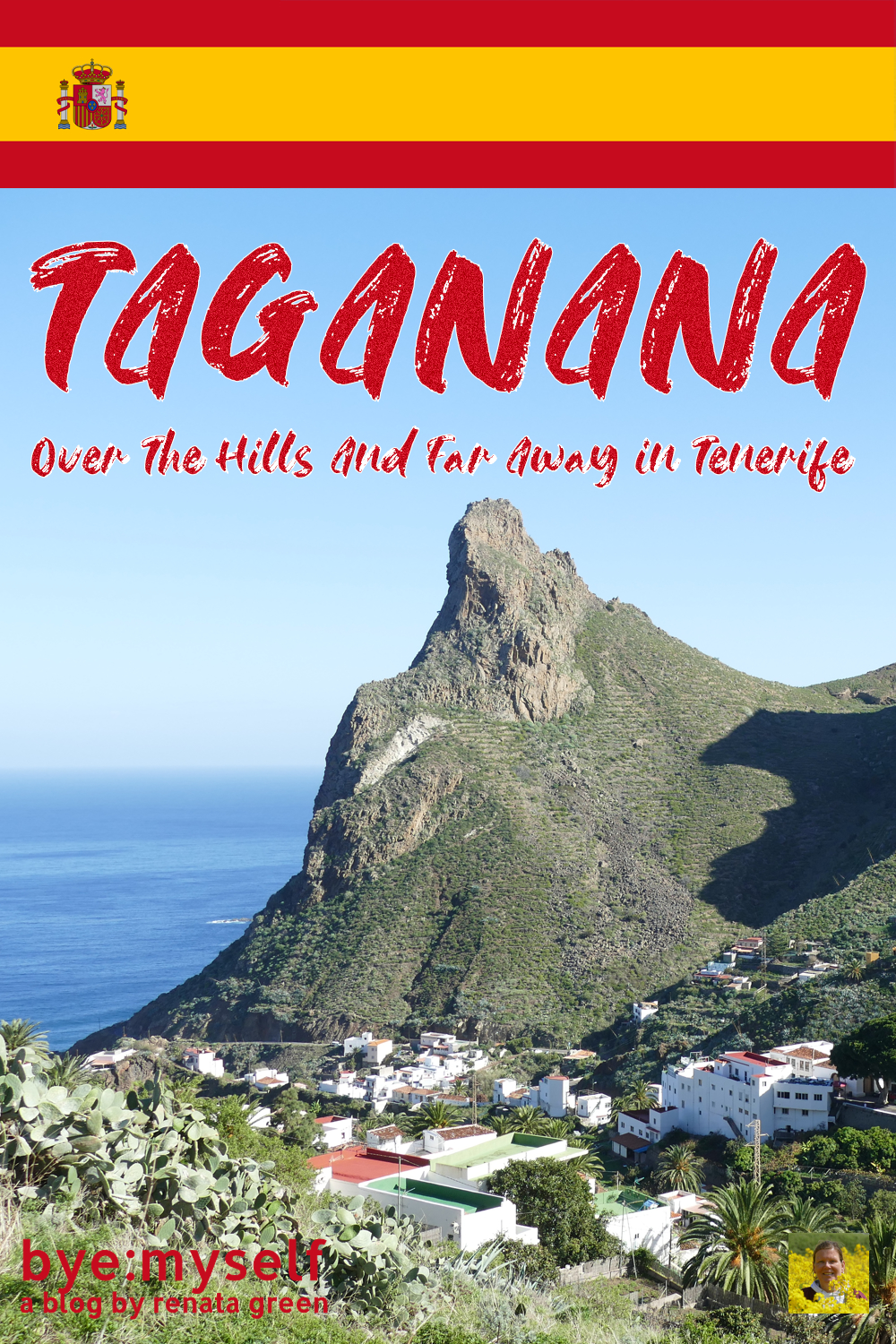
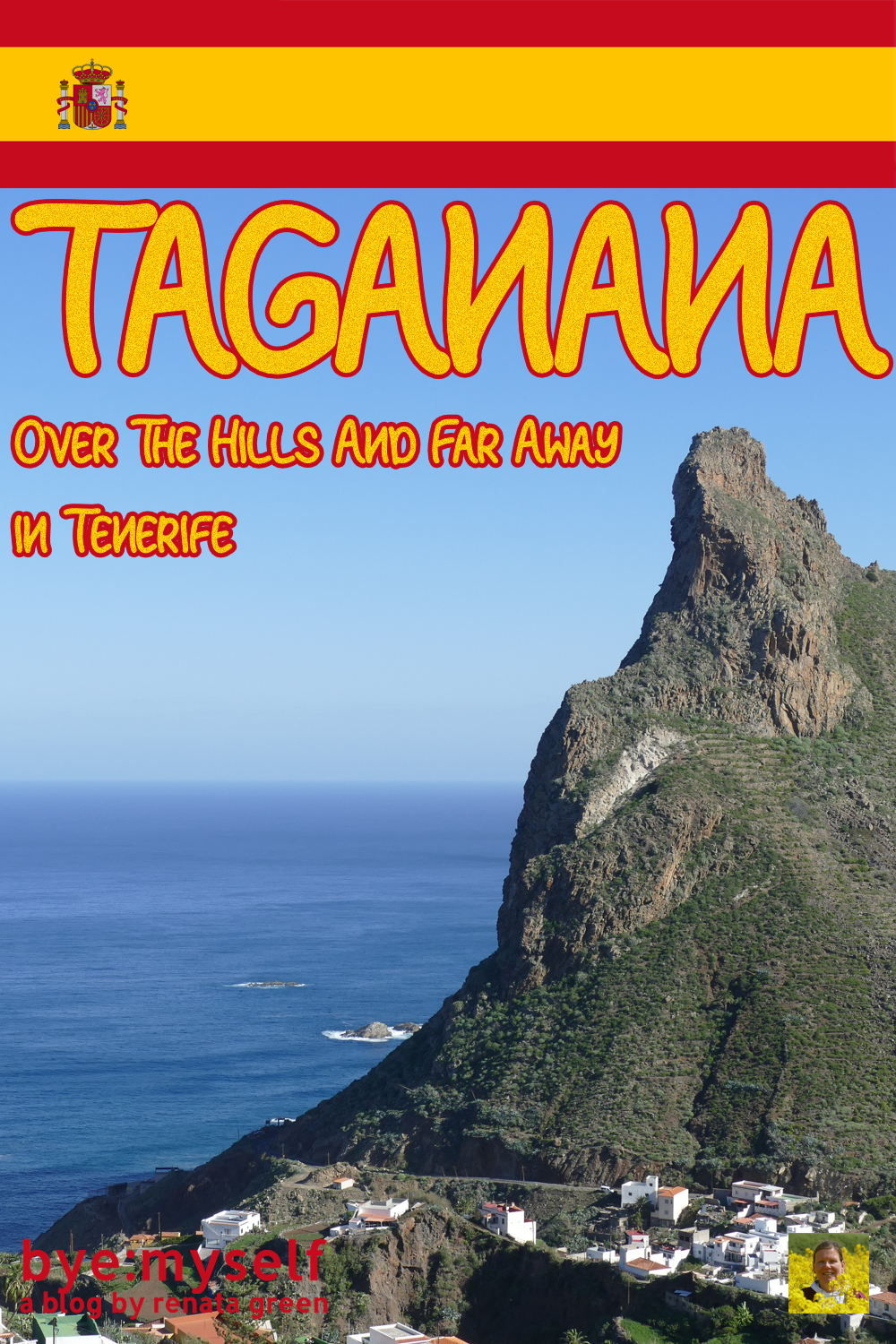
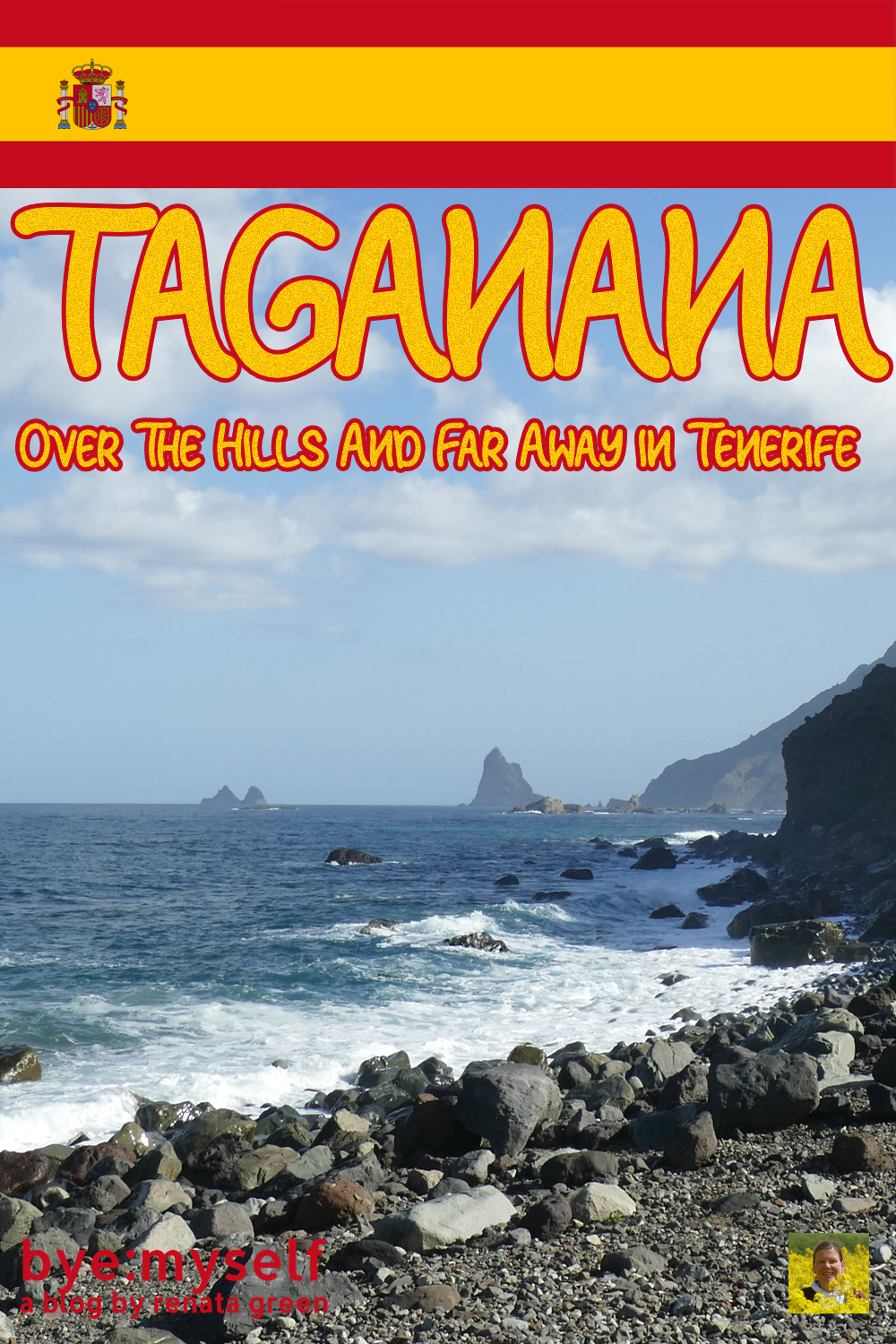
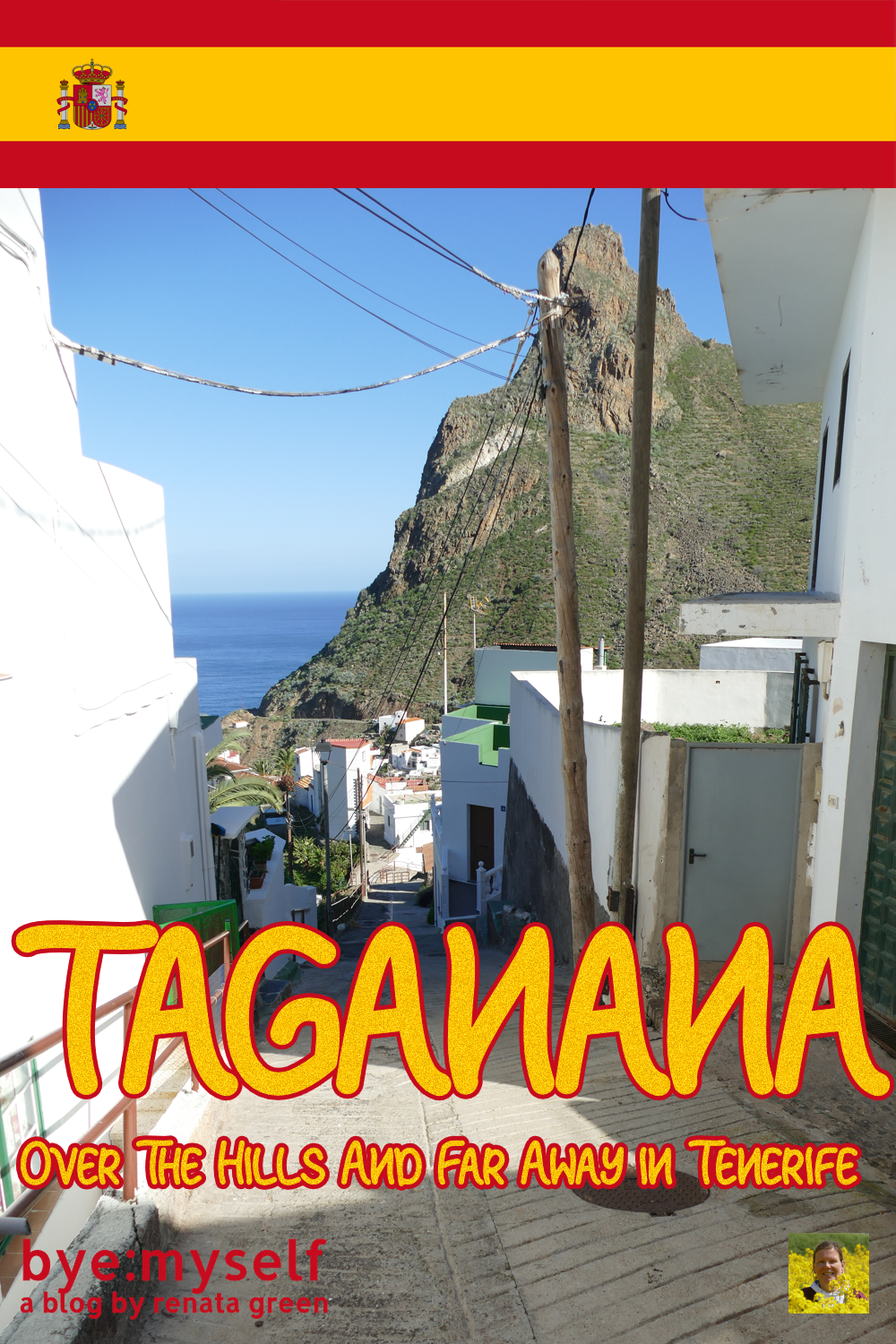
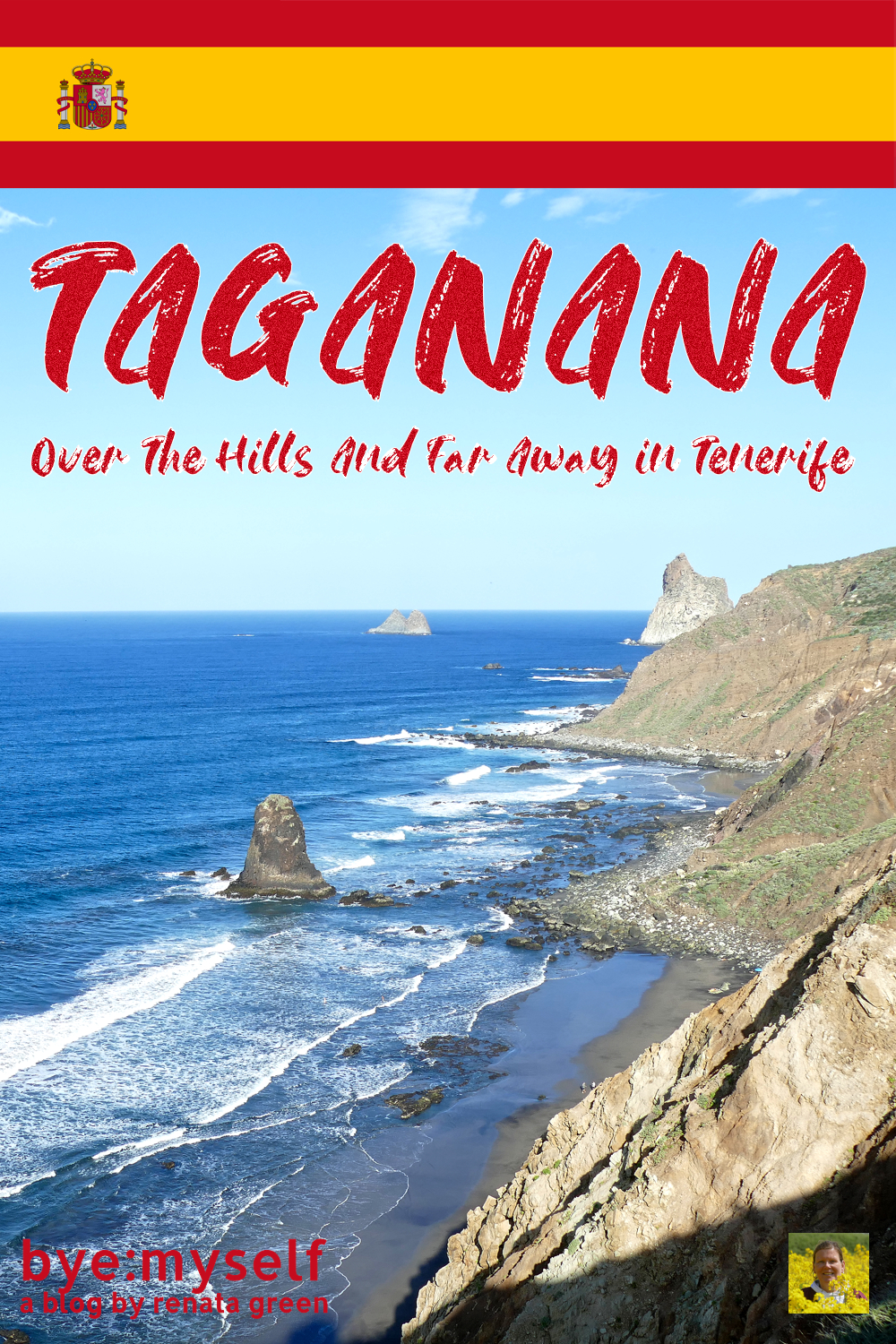
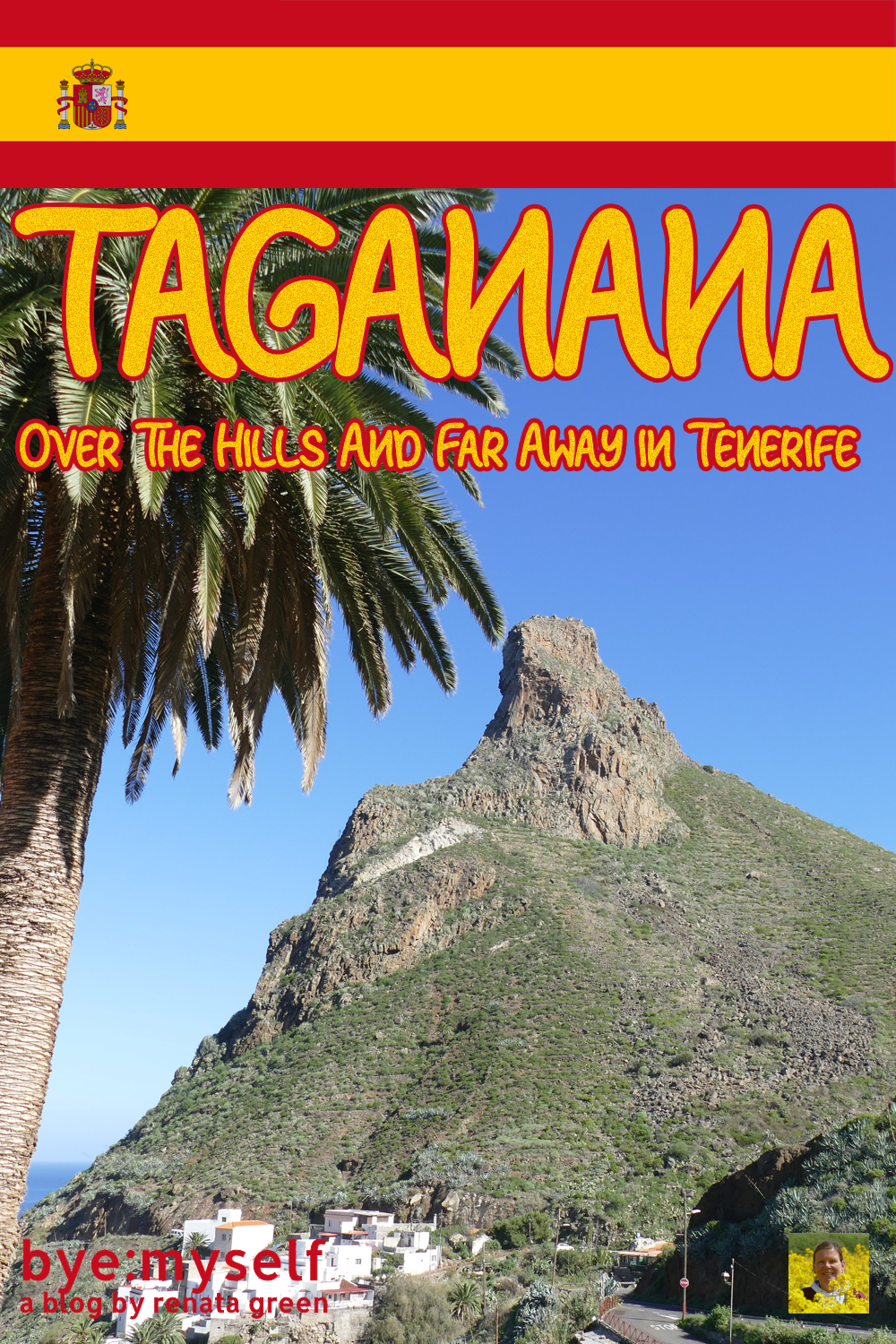
Note: I’m completing, editing, and updating this post regularly – last in September 2025.
Did You Enjoy This Post? Then You Might Also Like These:
Guide to PUERTO DE LA CRUZ – a Town Full of Contrasts
LA OROTAVA – Tenerife’s Most Mesmerizing Mountain Town
EL MEDANO – where not only the wind will blow you away
MOUNT TEIDE – the Highlight of Tenerife
ISLAND HOPPING in the CANARY ISLANDS
Day Trip to San Cristobal de La Laguna and the National Park of Anaga
Best Things to do in TENERIFE – one week on a microcontinent
CANDELARIA, Home of the Canarian Virgin Mary and the Guanches
* This is an affiliate link. Hence, If you book through this page, not only do you get the best deal. I also get a small commission that helps me run this blog. Thank you so much for supporting me!
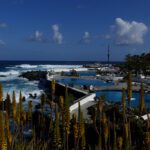
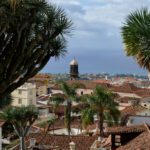
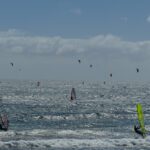
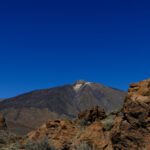
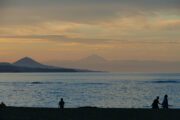
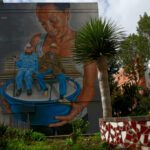
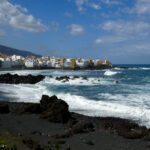

We certainly like to stay away from the crowded spots and head to the small gems like Taganana. Definitely one for our list when we finally get back to Tenerife. The crazy mountain road to get there is my kind of drive! And so worth it for the views. So many great spots to wander for outdoor experiences. Even if it will be a clamber to the beaches.